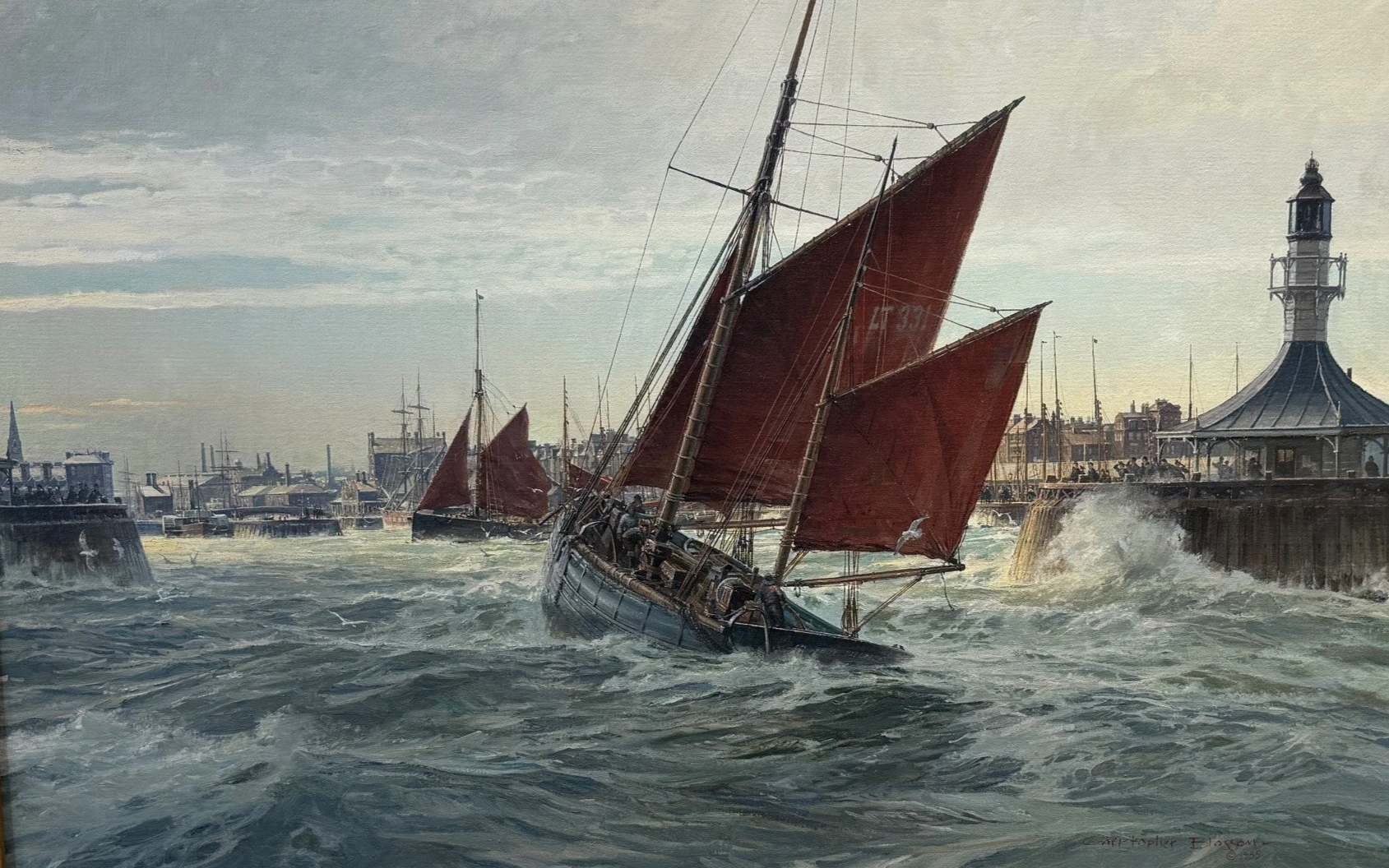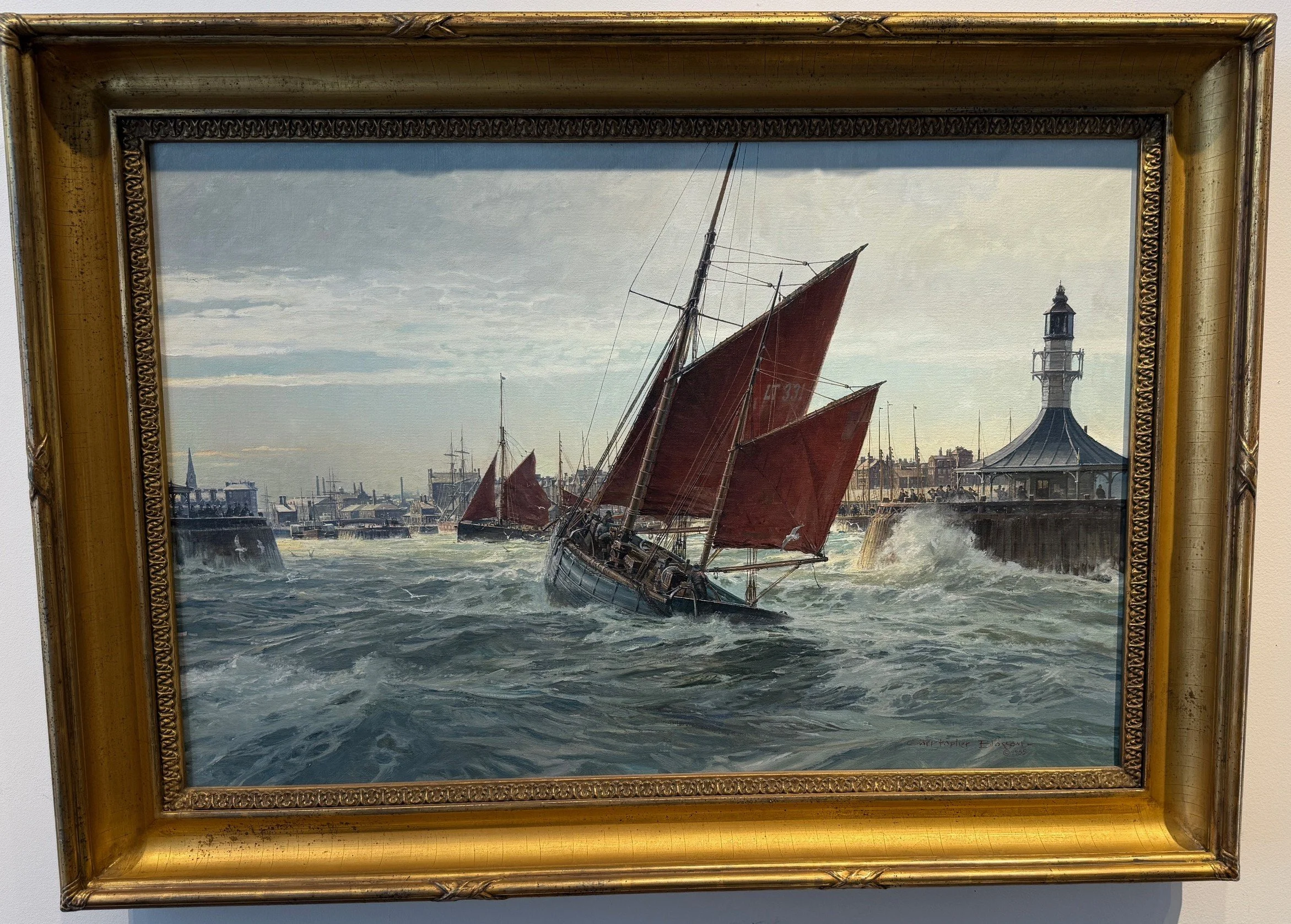Fishing Trawler Threading the Break Walls at Lowestoft, England
oil on canvas, 22” x 34” (framed dimensions: 26” x 38”)
$35,000
The coming of the railway in the mid-nineteenth century made inland fresh fish markets possible, where previously only dried or salted fish were available. The increase in demand fueled a tremendous growth in the fishing industry all over Great Britain. Lowestoft was an excellent example. With no natural harbor, fishing was conducted with luggers off the exposed beach. In 1831, a harbor was constructed linking Lowestoft to an inland waterway system, but it wasn’t until the railroad came in 1850 that the fishing industry expanded beyond the local market. Each change led to another. Fishing methods changed, boats and gear improved and rich new grounds were discovered. All of this added to the growing importance of the fishing industry in the economy of Great Britain.
As with many English harbors, Lowestoft is protected by piers that form an outer harbor. This painting shows a typical Lowestoft trawler with the marked elliptical transom that was the local custom in a rough sea, making her way between the pier heads at Lowestoft.

